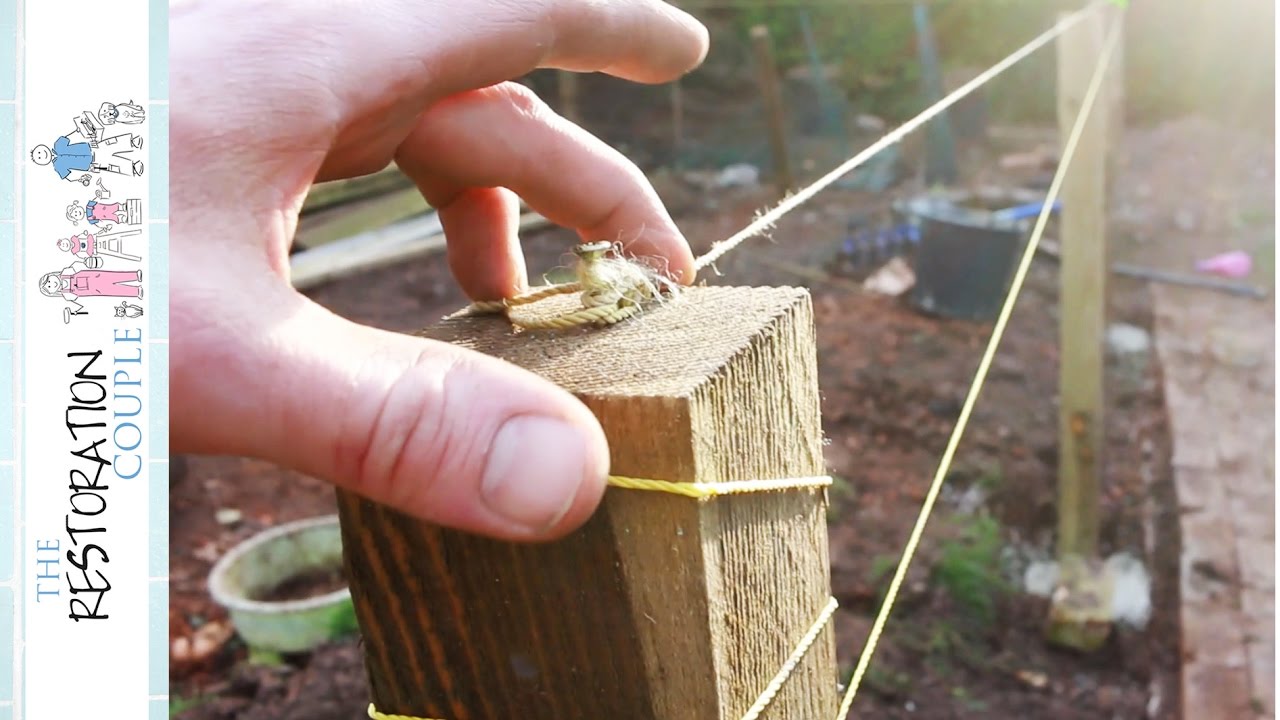Leveling a fence line can be achieved by using a line level and string to ensure the height remains consistent throughout. By following these steps, you can easily level your fence line.
Is your fence line looking uneven and unappealing? Leveling a fence line can make a significant difference in the overall appearance and functionality of your fence. Whether you’re installing a new fence or simply want to fix an existing one, a leveled fence line adds a polished and professional touch.

Credit: www.reddit.com
Uneven fence lines can result in gaps, leaning posts, and an overall shabby appearance. However, with the right tools and techniques, leveling your fence line isn’t as complicated as it may seem. We will guide you through the step-by-step process of leveling a fence line, ensuring a straight and aesthetically pleasing result. Get ready to transform your fence and enhance your outdoor space!
How to Level a Fence Line : Step by Step Guide
Assessing The Existing Fence Line
In order to level a fence line, it is important to assess the existing fence and evaluate its current condition. This involves identifying areas of unevenness or sagging and determining the extent of leveling that is required. By thoroughly inspecting the fence, you can pinpoint any areas that may need attention and devise a plan for achieving a level fence line.
Gathering The Necessary Tools And Materials
List of tools needed for the project:
- Measuring tape
- Level
- String line
- Hammer
- Shovel
- Wheelbarrow
- Screwdriver
Materials required for leveling the fence line:
- Concrete mix
- Gravel
- Wooden stakes
- 2×4 lumber
- Nails
- Screws
Safety equipment recommendations:
- Safety goggles
- Work gloves
- Steel-toed boots
- Dust mask
Ensure that you have all the necessary tools and materials before starting the fence line leveling project. A measuring tape is essential for accurate measurements, while a level will help you ensure the fence is straight. Use a string line to guide your work and make sure the fence is aligned correctly.
A hammer will be useful for driving in any necessary stakes, and a shovel and wheelbarrow will assist with digging and moving soil. Keep a screwdriver handy for any adjustments or repairs. In terms of materials, you’ll need concrete mix to secure the fence posts, gravel for the base, wooden stakes for support, and 2×4 lumber for bracing. Nails and screws will be needed for attaching the fence components together. Lastly, prioritize safety by wearing safety goggles, work gloves, steel-toed boots, and a dust mask during the project.
Preparing The Fence Line For Leveling
Preparing the fence line for leveling requires a few essential steps. First, it is important to clear any debris or vegetation that may obstruct the process. Removing these obstacles ensures a clean and clear surface to work with.
Next, securing any loose or damaged fence posts or panels is crucial. This step guarantees stability and prevents any further damage to the fence. Inspecting each post carefully and making necessary repairs will save time and effort in the long run.
Additionally, checking the alignment and stability of existing posts is essential. This involves assessing whether the posts are straight and secure. Any misalignment can be adjusted by repositioning or reinforcing the posts for an even and level fence line.
Choosing The Right Leveling Method
Exploring different approaches to level a fence line:
- String and stake method: This method involves stretching a string along the fence line and using stakes to mark the desired height. It is suitable for all fence types and provides an accurate level.
- Using a level bar: A level bar helps measure the distance between posts to ensure an even fence line. It is effective for wooden and chain-link fences.
- Using a laser level: Laser levels provide precise measurements, making them suitable for long fence lines. They can help ensure the fence is aligned correctly.
- Checking with a water level: A water level involves using a clear tube filled with water to determine the level. It is a cost-effective method suitable for all fence types.
- Considering the slope: For sloped areas, adjusting the height of the fence posts is necessary to maintain a level fence line. This may involve digging deeper holes or using different post lengths.
Selecting the most appropriate method for your specific situation depends on the type of fence and the slope of the terrain. Taking the time to level your fence line properly will ensure a sturdy and visually appealing result.
Leveling Techniques For Different Fence Types
Leveling Techniques for Different Fence Types
| Fence Type | Leveling Technique |
|---|---|
| Wooden Fence | Adjust fence posts to ensure proper height and alignment. |
| Straighten warped or bowed panels by reinforcing or replacing them. | |
| Replace rotted or damaged components to maintain a level fence line. | |
| Chain-Link Fence | Tighten sagging sections using tension bands and adjusters. |
| Realign bent posts to restore a level fence line. | |
| Fix gaps or loose connections by securing them with additional fasteners. | |
| Vinyl or PVC Fence | Reinforce existing posts with concrete to prevent shifting. |
| Reattach loose panels using screws or brackets. | |
| Realign misaligned sections for a level fence line. |
Implementing the Chosen Leveling Method
Leveling a fence line is an important step in ensuring a professional finish for your fence installation. Follow these step-by-step instructions to achieve a leveled fence line:
- Start by using a string line as a guide to mark the desired height of the fence posts.
- Measure and mark the post height on each post, ensuring consistency throughout.
- Dig the post holes to the desired depth, taking into account the recommended depth for your specific fence type.
- Place each post in its respective hole, ensuring it is level and plumb in all directions.
- Secure the posts in place with concrete or gravel, allowing it to set and cure according to the manufacturer’s instructions.
- Attach the fence panels or boards to the posts, making sure they are parallel and level.
To achieve a professional finish, consider these helpful tips and tricks:
- Regularly check the levelness of the fence line throughout the installation process.
- Use a post level or a string level to ensure the posts are perfectly vertical.
- Adjust the post height as needed to maintain a consistent fence line.
- If you encounter issues such as an uneven terrain, consider using adjustable post anchors or shimming the base of the posts.
Common issues that may arise during the leveling process include:
- Uneven ground or slopes may require additional leveling techniques.
- Improper post alignment can cause the fence line to appear uneven.
- Incorrect measurements or inaccurate leveling tools can lead to an unlevel fence.
Ensuring Long-Term Fence Stability
A leveled fence line is crucial for long-term stability. To further enhance its durability, additional measures should be taken. Proper maintenance practices and care are essential. Regular inspections and adjustments are highly recommended to ensure the fence remains in optimal condition.
- Maintenance: Regularly inspect the fence for any signs of damage, such as loose boards or posts, rusted hardware, or rotting wood. Address any issues promptly to prevent further damage.
- Inspections and Adjustments: Schedule periodic inspections to check the alignment and stability of the fence. Adjustments may be needed to ensure a level fence line, especially after severe weather conditions.
Decorating And Landscaping Around The Leveled Fence Line
In order to enhance the aesthetic appeal of your leveled fence, there are several creative ideas that you can consider. One option is to choose suitable plants, shrubs, or other elements that complement the overall look of your fence. Carefully select vegetation that not only adds beauty but also thrives in your specific climate and soil conditions.
Another way to enhance the fence line is by incorporating decorative features while preserving the stability of the fence. Consider adding elements such as decorative panels, trellises, or even lighting fixtures that can be attached to the fence posts.
By carefully selecting the right plants and incorporating decorative features, you can effectively enhance the visual appeal of your leveled fence line while ensuring that it remains stable and functional. With a touch of creativity, your fence line can become a stunning feature in your outdoor space.
Frequently Asked Questions Of How To Level A Fence Line
Should A Fence Be Level Or Follow The Ground?
A fence should be level to ensure stability and prevent gaps between the ground and the fence.
How Do I Make Sure My Fence Line Is Straight?
To ensure your fence line is straight: 1. Measure and mark the desired location for your fence. 2. Use a string or chalk line to create a straight guideline. 3. Use a level or plumb bob to check for vertical alignment.
4. Adjust the fence posts as needed to maintain a straight line.
How Do You Level Fence Posts On Uneven Ground?
Leveling fence posts on uneven ground requires careful adjustment using methods such as using a level, digging deeper holes, and adding gravel or concrete for stability.
How Do You Level Ground For A Fence?
Leveling ground for a fence involves these steps: measuring the area, removing debris, digging post holes, and filling them with concrete.
Conclusion
Leveling a fence line is an essential step towards creating a visually appealing and functional outdoor space. By following the steps outlined in this blog post, you can ensure that your fence is properly aligned and provides the necessary stability and support.
Remember to gather the necessary tools and materials, measure and mark the fence line, and use a combination of digging, filling, and packing techniques to achieve a level fence. Regular maintenance and periodic inspections are recommended to identify any potential issues and address them promptly.
Keeping your fence level will not only enhance its aesthetic value but also contribute to its longevity. So, take the time to level your fence properly and enjoy the satisfaction of a beautiful and well-maintained outdoor space.

